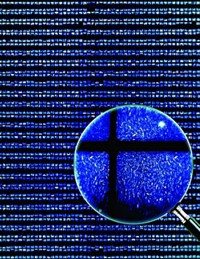Advertisement
Grab your lab coat. Let's get started
Welcome!
Welcome!
Create an account below to get 6 C&EN articles per month, receive newsletters and more - all free.
It seems this is your first time logging in online. Please enter the following information to continue.
As an ACS member you automatically get access to this site. All we need is few more details to create your reading experience.
Not you? Sign in with a different account.
Not you? Sign in with a different account.
ERROR 1
ERROR 1
ERROR 2
ERROR 2
ERROR 2
ERROR 2
ERROR 2
Password and Confirm password must match.
If you have an ACS member number, please enter it here so we can link this account to your membership. (optional)
ERROR 2
ACS values your privacy. By submitting your information, you are gaining access to C&EN and subscribing to our weekly newsletter. We use the information you provide to make your reading experience better, and we will never sell your data to third party members.
Analytical Chemistry
Device Tests Toxic Waters
Pollution: Genetically engineered bacteria could allow cheap detection of water contaminants
by Katharine Sanderson
September 8, 2011

Detecting toxic water contaminants could become easier thanks to a bioluminescent sensor being developed by scientists in Israel. The researchers have built a device that spots and quantifies different types of contaminants--heavy metals, oxidants, or mutagens--in flowing water (Environ. Sci. Technol., DOI: 10.1021/es202465c).
Picking out pollutants from water samples--either routinely in effluent from an industrial plant or after an industrial accident--usually takes weeks and requires toting samples to an analytical chemistry laboratory. Researchers hope to use bioassays based on bacteria to monitor water in situ and quickly. But so far it has proved difficult to design a device that can distinguish between different pollutants and can be left in the field to work for long periods. Now researchers have developed a disposable biochip that can last for a couple of weeks or more, and coupled it with a clever detection system.
Building on previous work, Shimshon Belkin of the Hebrew University of Jerusalem and his team developed a disposable plastic biochip with 48 wells. Each well holds a strain of genetically altered bacteria immobilized in an agar gel. The bacteria contain one of three DNA fragments that sense each contaminant. Fused to these DNA fragments is another containing lux genes, which generate a bioluminescent signal only when the sensing genes note the presence of a contaminant.
In the device, water flows across the wells while a detector watches for light signals. The detector is a so-called single photon avalanche detector, in which a single photon triggers an amplification of the signal, which makes it easier to detect and quantify. Because the wells hold three different bacterial strains, the researchers can tell what family of contaminant, and how much, is in the water sample.
Using the device, the researchers detected contaminants at levels that meet the World Health Organization’s recommendations for maximum safe doses in drinking water. The device could detect arsenic at 0.01 mg per liter of water, and antimony at 0.005 mg/L. It also could detect the herbicide paraquat and mutagens including mitomycin C. Detection took between 30 minutes and 2 ½ hours.
Belkin emphasizes that the device is a proof of concept: “It is not the magic solution,” he says. But he adds that the technical hurdles to making a cheap device that can pick out specific pollutants, rather than simply identifying types of pollutant, would be easy to overcome given the right funding and industrial partner.
Gerald Thouand, from the University of Nantes, in France, who works on similar systems, says that this work is important because the device can pick out contaminants from a mixture in real time and can last for over a week. Thouand says that one major hurdle is that the bacteria inevitably form a biofilm after a few weeks, which renders the device useless. But he anticipates that Belkin and others will iron out these problems. Then, he says, a network of devices like these could act as an early warning system for industrial areas such as chemical plants or sewage works where water pollutants could cause widespread damage.





Join the conversation
Contact the reporter
Submit a Letter to the Editor for publication
Engage with us on Twitter